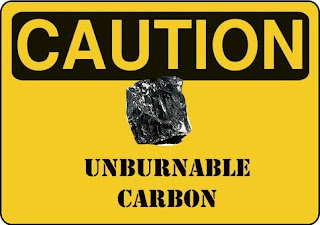Av Lina H. Ingeborgrud, masterstudent ved Institutt for tverrfaglige kulturstudier, med spesialisering i studier av kunnskap, teknologi og samfunn, NTNUÅ kjøre Nissan Leaf er ingen veldedighetsaktivitet
Norge har i dag flest elbiler per innbygger og høyest andel elbiler av nybilsalget i verden (Figenbaum, Kolbenstvedt, 2020). Jeg skriver masteroppgave i samarbeid med Transnova/Statens Vegvesen med problemstillingen Elbil i en komfortkultur? Sluttbrukeren står i fokus, og her undersøker jeg om og hvordan elbilen oppleves som komfortabel med tanke på våre mobilitetsbehov og krav. Komfort står her i et slags motsetningsforhold til å velge miljø, men høyt forbruk er ikke nødvendigvis det samme som komfort. Komfort er både fysisk og emosjonell velstand, og den emosjonelle komforten synes å være viktig når vi utfører såkalte riktige handlinger – handlinger vi opplever er av betydning for andre enn oss selv.
Bilen – en naturlig del av familien?
Mine informanter legger ikke skylden på politikerne i spørsmål om bil og forurensning, men anklager i større grad seg selv, og alt de burde gjort eller ikke gjort. De forsvarer kjøringen med at det er nødvendig i denne fasen, med denne økonomien eller lignende. Det er særlig viktig å ha bil når man har barn, og bilen betraktes som en nødvendighet for å få familien til å gå rundt. Bilen synes å ha blitt naturlig i hverdagen, men denne naturligheten viser seg å bli mer åpen for forhandling. Det er mulig å se for seg en hverdag uten bil, men helst i en annen livssituasjon. Når bilkjøring stadig er utsatt for debatt, tyder dette på at praksisen ikke er «lukket», det vil si at det ikke er enighet om at problemene knyttet til teknologien er løst (Bijker og Pinch, 1984:6). Bilkomfort er altså ikke en stabil størrelse. Bilen er både venn og fiende. Bilen som en praktisk nødvendighet er fremdeles stabilisert i vår komfortkultur. Allikevel er de symbolske og kognitive aspektene ved bilkjøringen truet, gjennom dårlig samvittighet for miljøet og familiens helse.
Elbilen – en god nummer 1?
Regjeringen har forpliktet seg til å ta klimatrusselen på alvor, og bruker ulike insentiver for å stimulere til økt elbilbruk. Blant annet får elbilen avgiftsfritak, gratis parkering og bom, og tilgang i kollektivfeltet. Selv om insentivene gjør elbil til et reelt alternativ for flere, viser det seg at elbilens kulturelle og sosiale sider er av større betydning enn det økonomiske regnestykket. Elbilkjøring er ikke en isolert aktivitet, men en sammensatt handling, som i stor grad synes å være knyttet til informantenes miljøsamvittighet og selvbilde. Dette trenger ikke bety at elbilkjøring går på bekostning av deres bilkomfort – heller tvert imot. Flere av elbilistene mener de har fått en bedre bil med elbilen. De elbilistene jeg har intervjuet med nyere type elbil (Nissan Leaf, Mitsubishi i-MiEV) opplever elbilen som en trygg, ordentlig og teknisk velutrustet bil, som er effektiv og morsom å kjøre. De omtaler den dessuten som rask, sterk, økonomisk og miljøvennlig. Elbilistene forklarer at de opplever ladingen, da særlig normallading over natta hjemme, som enklere enn å fylle bensin. Elbilen oppleves som mer komfortabel enn bensinbilen blant elbilbrukerne.
Den nye miljøkomforten
Norge har blitt beskrevet som et komfortsamfunn – en kultur med stadig større forventninger om komfort (Sørensen, 2007:20). Bilen gjør det enklere å planlegge en travel hverdag, og den gir frihet og forutsigbarhet. Allikevel opplever flere av de bensinbilistene jeg har intervjuet at det er ukomfortabelt, eller rett og slett uetisk, å være for opptatt av bil og kjøre mye unødvendig. De forklarer at de egentlig ikke er så opptatt av bil, men at det er svært praktisk. Å bidra til en mindre forurensende bilkultur synes å være en form for miljøkomfort, og dette gir bedre samvittighet. For elbilistene virker det derimot mer legitimt å være opptatt av bil, både med tanke på utseende og teknisk utrustning. Valg av kjøreteknologi er knyttet til følelser og etikk, og noen av informantene forklarer at de ville følt seg som bedre mennesker dersom de hadde brukt elbil. De setter sine egne handlinger inn i et langtidsperspektiv, som påvirker kommende generasjoners livsbetingelser.
Privatbilismen forårsaker store CO2- utslipp, og det kan virke som om de komfortable bilvanene er truet av en stadig økende klimatrussel. Allikevel ser det ut til at bilen nærmest har blitt uvurderlig i hverdagslivet. Et økende press om mer miljøvennlig kjøring åpner debatten – det blir en debatt om meningen med selve kjøringen. Flere av mine informanter, og særlig kvinnene, opplever dårlig samvittighet for å kjøre, og det er særlig korte turer som føles unødvendige. Dette synes ikke å redusere kjøringen, men samvittigheten får derimot gjennomgå. Kunnskapsnivået om klimaendringene er høyt i Norge, men det er kombinasjonen mellom tanke og handling som er utfordringen for informantene. Næss og Ryghaug (2007:81) forklarer at det er etterspørsel etter mer handlingsrelevant kunnskap. Folk ønsker å bidra, men er usikre på hva som er riktig å gjøre.
Referanser
Bijker og Pinch (1984) i Bijker, Hughes og Pinch, red. (2020) The social construction of technological systems. New directions in the sociology and history of technology
MIT press. 2ndedition
Figenbaum, E. Og Kolbenstvedt, M. (2020) Elektromobilitet i Norge – erfaringer og muligheter med elkjøretøy, Transportøkonomisk institutt: Oslo, (Link: https://www.toi.no/publikasjoner/elektromobilitet-i-norge-erfaringer-og-muligheter-med-elkjoeretoey-article32020-8.html lastet ned 12.11.2020)
Næss R. og Ryghaug M. (2007) i Aune og Sørensen red. (2007) Mellom klima og komfort - Utfordringer for en bærekraftig energiutvikling, Trondheim: Tapir akademisk forlag




.jpg)












